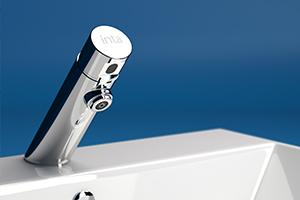An outbreak of Legionnaires disease in the West Midlands has prompted a plumbing equipment manufacturer Intatec to remind facilities managers that…
How can Legionella be prevented in care and nursing homes?
Dave Lancaster from Uponor, provider of total solutions for the safe transportation of water around buildings, discusses the importance of safeguarding patients and residents against the risk of Legionella.
Legionnaires' disease is a serious form of pneumonia, which can result in potentially fatal consequences for vulnerable patients and residents in your care and nursing homes. The illness is caused by Legionella bacteria which is widely distributed in natural water bases such as ponds and lakes , but can also breed in any stagnant water between 25 °C and 45 °C, including hot and cold-water systems.
It is imperative that care and nursing homes have a Legionella control scheme in place to help prevent the contamination of water transportation systems within the building. Such measures include temperature control regimes, disinfection measures and regular monitoring and reporting. In line with this preventative action, it is equally crucial that care home managers take appropriate steps to minimise the health risks to patients and residents by doing what they can to reduce the likelihood of Legionella bacteria breeding within a property’s plumbing and heating systems.
Danger zones 
Being aware of ‘danger zones’ in older systems is crucial. This is when ongoing repairs or re-routing of water pipes result in ‘dead-legs’ – runs of pipework that are not commonly in use – or ‘blind-ends’ – lengths of pipe which have been terminated and are no longer in use – lead to the stagnation of water and provide the ideal environment for the breeding of Legionella bacteria. For that reason, it’s important that if you are aware that a length of pipework forming part of your system is rarely used or has been capped off, you take action to have them removed to prevent the spread of potentially deadly bacteria.
That said, systems within care homes that have been built more recently are not without risk either. This is because a key requirement of a modern building is to use more efficient water outlets and reduce water consumption, which can often lead to oversized supply pipe work. Unless the pipe network has been specifically designed to adapt to these reduced flows, there is a high risk of stagnant water.
Know your pipes
When it comes to designing or selecting a new water system with an installer or perhaps by yourself, there are steps you can take to help minimise the risk of Legionella. Traditional copper piping, which will be found in many older systems, can harbour bacterial growth on the internal wall of the pipe. By switching to more modern piping, such as MLCP (multi-layer composite), which has a much smoother internal surface, you can reduce this risk.
What’s more, any small crevices where two pipes connect (often seen on more traditional piping methods) can increase a likelihood of bacterial growth, creating the ideal condition to harbour and cultivate Legionella. By opting for modern pipes, which are sealed on the inside and provide a smoother and more hygienic connection, you can further reduce the chance of bacteria growth within the new system.
Installation
Finally, choosing the correct pipework configuration is also crucial. ‘Loop’ installations flush water through the whole local pipe network every time any water outlet is opened, and is therefore the most effective method for reducing the possibility of Legionella. This type of system also enables the use of a consistent pipe size throughout, requires fewer connections and fittings, and eradicates runs of pipework which are not used, preventing stagnation and subsequently the risk of Legionella bacteria.
For more information on preventing Legionella and on Uponor’s range of solutions, visit: uponor.co.uk





